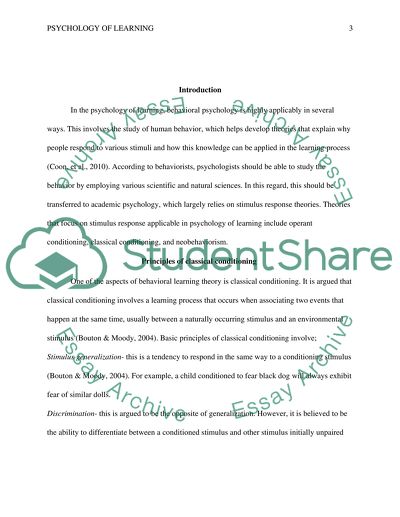Cite this document
(“Psychology of Learning Research Paper Example | Topics and Well Written Essays - 2250 words”, n.d.)
Psychology of Learning Research Paper Example | Topics and Well Written Essays - 2250 words. Retrieved from https://studentshare.org/psychology/1454534-psychology-of-learning
Psychology of Learning Research Paper Example | Topics and Well Written Essays - 2250 words. Retrieved from https://studentshare.org/psychology/1454534-psychology-of-learning
(Psychology of Learning Research Paper Example | Topics and Well Written Essays - 2250 Words)
Psychology of Learning Research Paper Example | Topics and Well Written Essays - 2250 Words. https://studentshare.org/psychology/1454534-psychology-of-learning.
Psychology of Learning Research Paper Example | Topics and Well Written Essays - 2250 Words. https://studentshare.org/psychology/1454534-psychology-of-learning.
“Psychology of Learning Research Paper Example | Topics and Well Written Essays - 2250 Words”, n.d. https://studentshare.org/psychology/1454534-psychology-of-learning.


